If you’re looking for the best food in Tuscany, you’ve come to the right place. This guide to the unique flavors of Tuscan cuisine and the region’s best wines will have you dreaming of a culinary journey into one of Italy’s most celebrated provinces.
As the birthplace of the Italian Renaissance, Tuscany is one of Italy’s most popular regions for art and culture. Besides the art-laden cities and rolling countryside hills, though, Tuscany also carries a rich culinary legacy that delights epicurean explorers.
Deciding what to eat in Tuscany each day is all part of the charm of visiting this beguiling part of central Italy. Rustic traditions and simplicity are the hallmarks of the best food in Tuscany.
Many favored dishes hail from humble peasant origins and recipes handed down through generations. Seasonal ingredients are plucked from the region’s fertile land, with the emphasis always on quality over quantity.
Dining in Tuscany is an experience in itself, with regional eats deeply connected to the area’s history, landscape, and culture. Before we dive into the best food in Tuscany, let’s take a look at the concept of cucina povera and what to expect from a Tuscan meal.
What Is Cucina Povera?
Cucina povera (poor kitchen in Italian) is a means of preparing food born out of necessity rather than luxury.
The concept stems from times of economic hardship, when poorer members of society would approach cooking with a practical mindset – relying on simple, inexpensive, and accessible ingredients to create wholesome meals.
These were often prepared in larger quantities to spare the need for daily cooking, much like our modern-day batch cooking.
Instead of disposing of food, families would find ways to introduce stale or expiring food items into the cooking pot. Stale bread was a staple in Tuscan food history, and remains a popular ingredient in contemporary recipes, honoring those resourceful ancestors.
Cucina povera has evolved into a modern philosophy of using every part of an ingredient. Besides being more sustainable, this brings out the agrarian flavors of Tuscany and fosters a deep connection to the land and local culture.
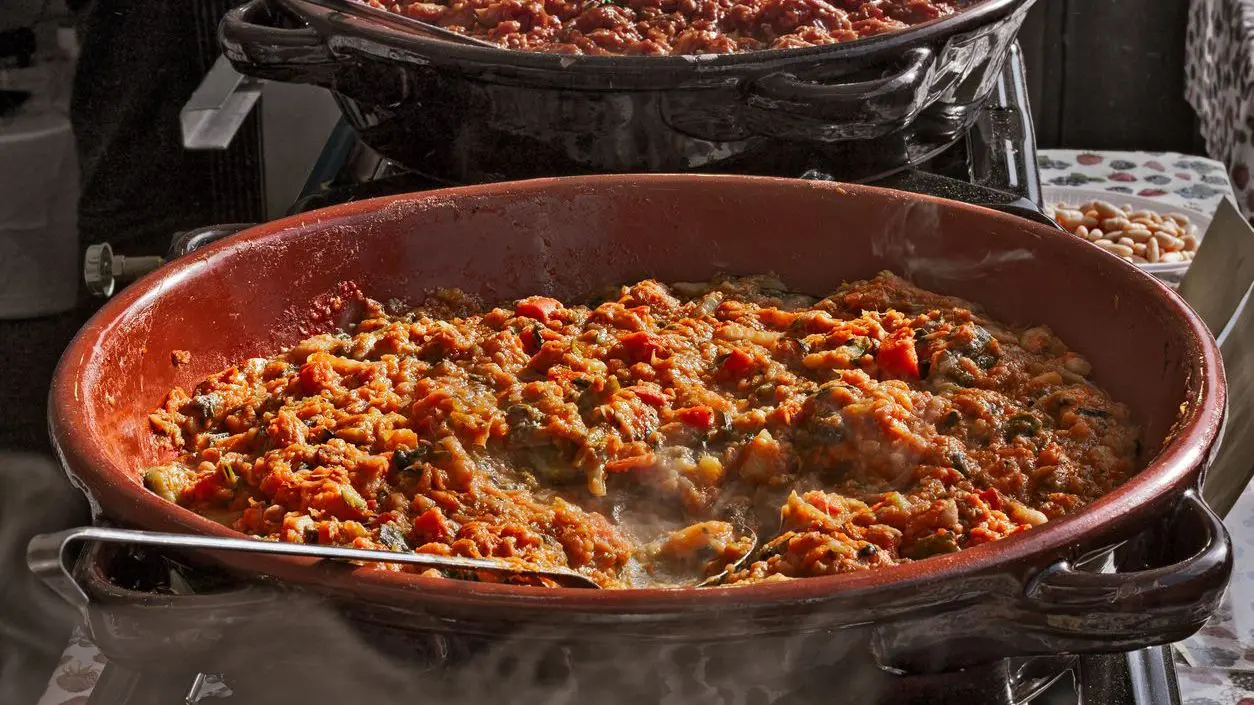
What To Expect At Tuscan Restaurants
Tuscan dining follows the traditional Italian meal structure, with larger plates bookended by lighter bites and something sweet. The crux of the Tuscan meal is divided into two plates, one being carbohydrate-based and the other being protein-based.
There are seven courses, officially, although travelers will usually mix and match two or three for a quick meal. For those seeking the comprehensive Tuscan dining experience, here are the full seven courses:
- Aperitivo: a light alcoholic beverage such as Prosecco, vermouth, or a local wine, served with small bites to stimulate the appetite.
- Antipasto: a starter such as bread with paté or cheeses and cured meats.
- Primo/primo piatto: the first course. This is usually carbohydrate-based, such as a bread-thickened soup, fresh pasta, or risotto.
- Secondo: the main dish introduces protein to the meal. Typical secondi include beef steak or seafood stew.
- Contorno: this is a side dish of vegetables, beans, or salad served alongside the secondo.
- Dolce: a light dessert of cake or biscuits served with dessert wine (such as Vin Santo) or espresso.
- Digestivo: a small glass of grappa or a final glass of Vin Santo.
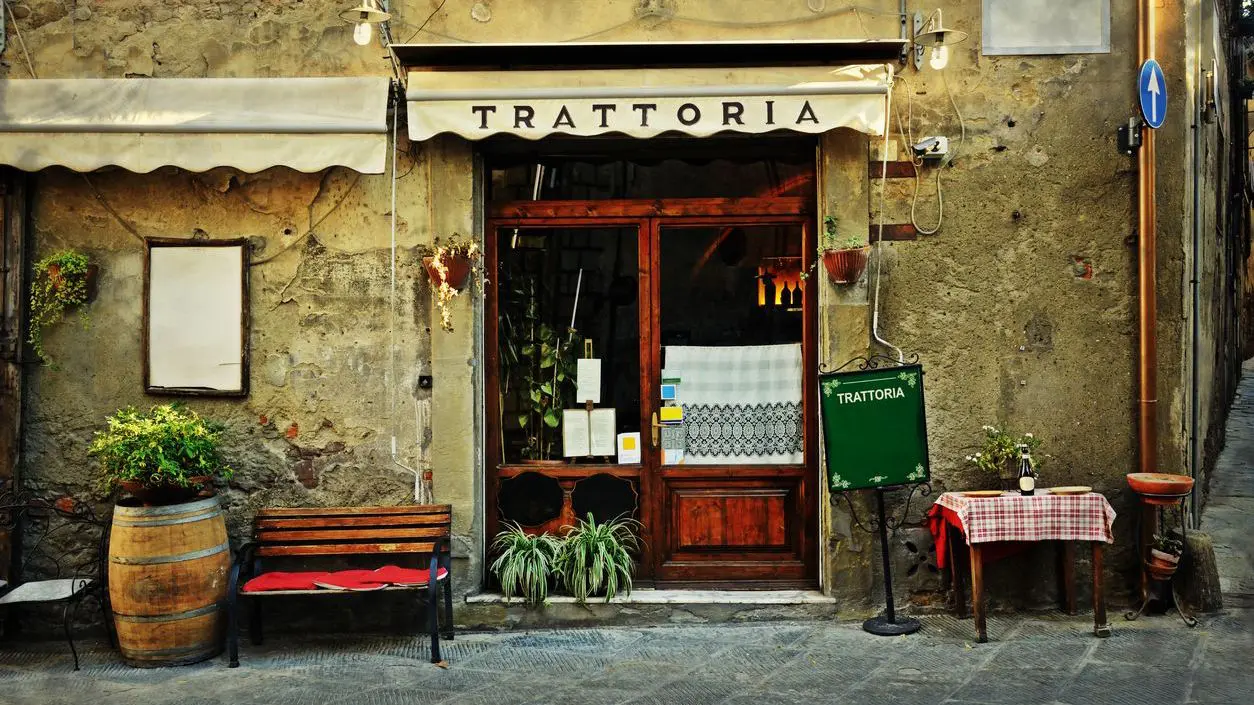
What To Eat in Tuscany, Italy – 25 Best Dishes & Wines
Here’s our selection of the best dishes and wines to try in Tuscany.
1. Bistecca alla Fiorentina
Bistecca alla Fiorentina (Florentine steak) is one of the most iconic Tuscan foods. It hails from the city of Florence and has been a cornerstone of Tuscan cuisine since the Renaissance, when the Medici family would serve beef steak at banquets.
The meat comes from young Chianina cattle, one of the world’s oldest breeds, and is traditionally prepared over a charcoal or wood grill. While the exterior should be somewhat charred, the interior of a true bistecca must be rare.
Florentine steak is served on the bone, with the tenderloin and the sirloin on opposite sides. Seasoning is minimal, with only a light sprinkling of salt and black pepper and a dash of olive oil being sufficient.
Bistecca alla Fiorentina is served with cannellini beans or potatoes and paired with Tuscan wine. Authentic bistecca is widely available at the trattorias of Florence as well as neighboring cities that have adopted the dish.
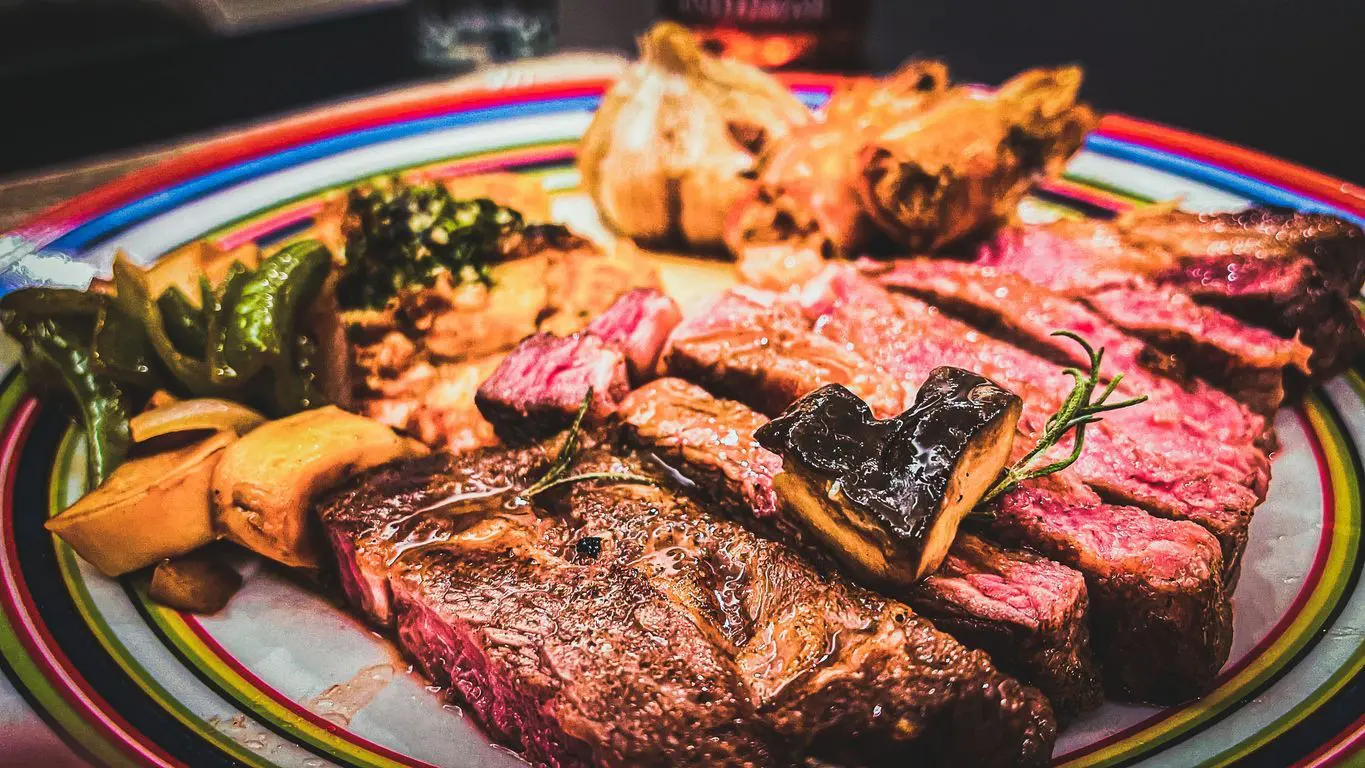
2. Pecorino Toscano
In a nation famed for its cheese, pecorino Toscano is the must-try cheese in Tuscany. Produced from sheep’s milk and available in fresh and aged varieties, this celebrated cheese has a nutty, buttery flavor with a hint of lemon.
It dates back to the Etruscan and Roman times and now stands as a Protected Designation of Origin (PDO) cheese, meaning that its quality and origin are guaranteed by a characteristic production process.
Fresh pecorino Toscano is mild with fruity notes, while the aged version is firm and rich, with hints of butterscotch. The cheese is versatile enough to enjoy as part of a cheese board with local wines or grated over main courses.
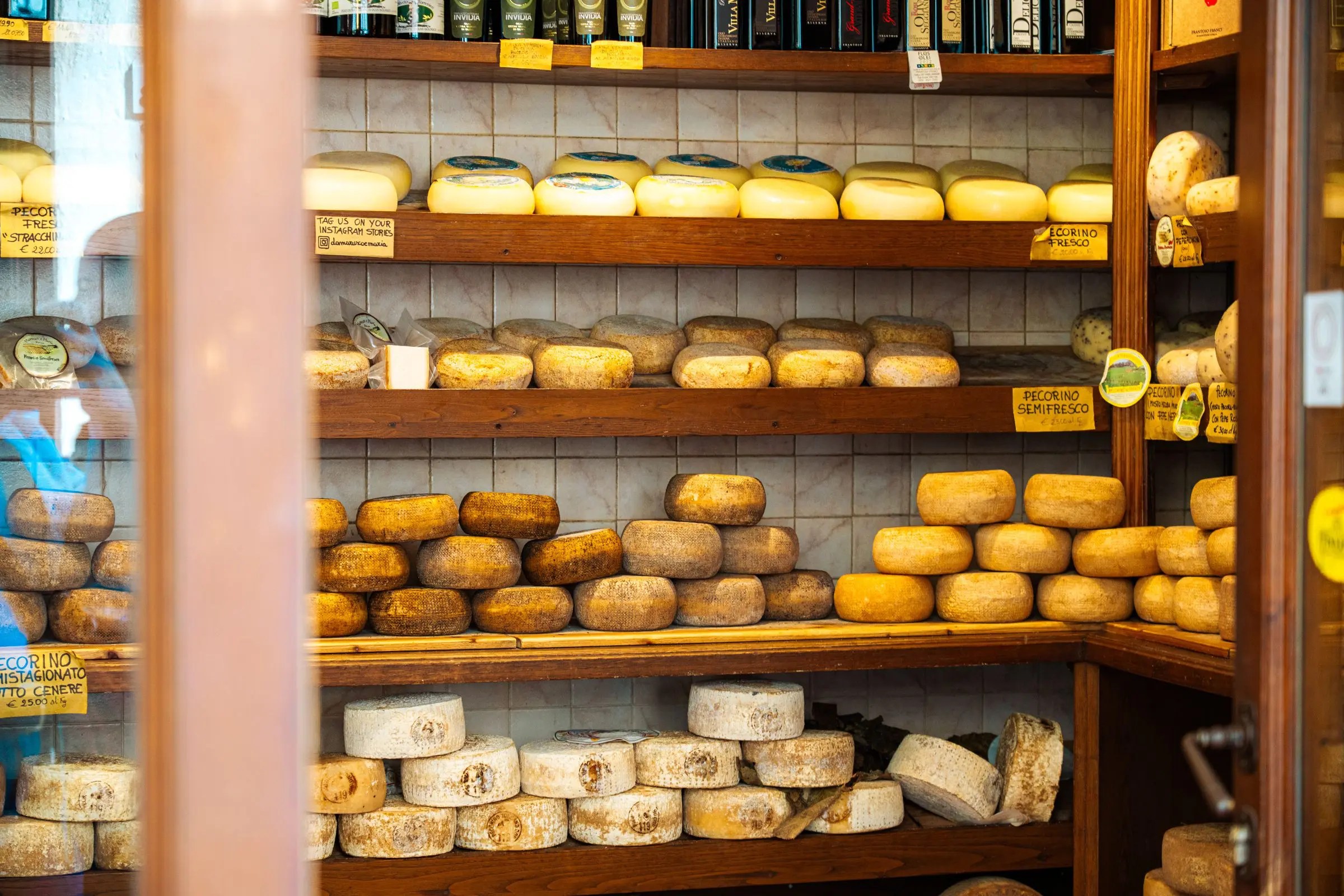
3. Cacciucco
Cacciucco is a rich, hearty fish stew originating from Tuscany’s port city of Livorno and surrounding fishing villages. Fishermen would cook up any unsold fish and scraps in a fragrant broth of tomato, garlic, and sometimes wine to produce a nourishing meal.
Over time, cacciucco evolved to be a symbol of coastal Tuscan cuisine and a source of pride. An authentic cacciucco contains at least five types of seafood. Supposedly, this number corresponds to the letter “c” in cacciucco.
There is no strict recipe, but this would typically be octopus, squid, mussels, red mullet, and cuttlefish, with some substitutions. Red or white wine may be used, and herbs are added to the broth. Cacciucco is usually served with a portion of garlic-rubbed Tuscan bread.
Capturing the essence of Livorno’s seafaring history, the stew fuses Mediterranean flavors with a humble cooking style that never goes out of fashion.
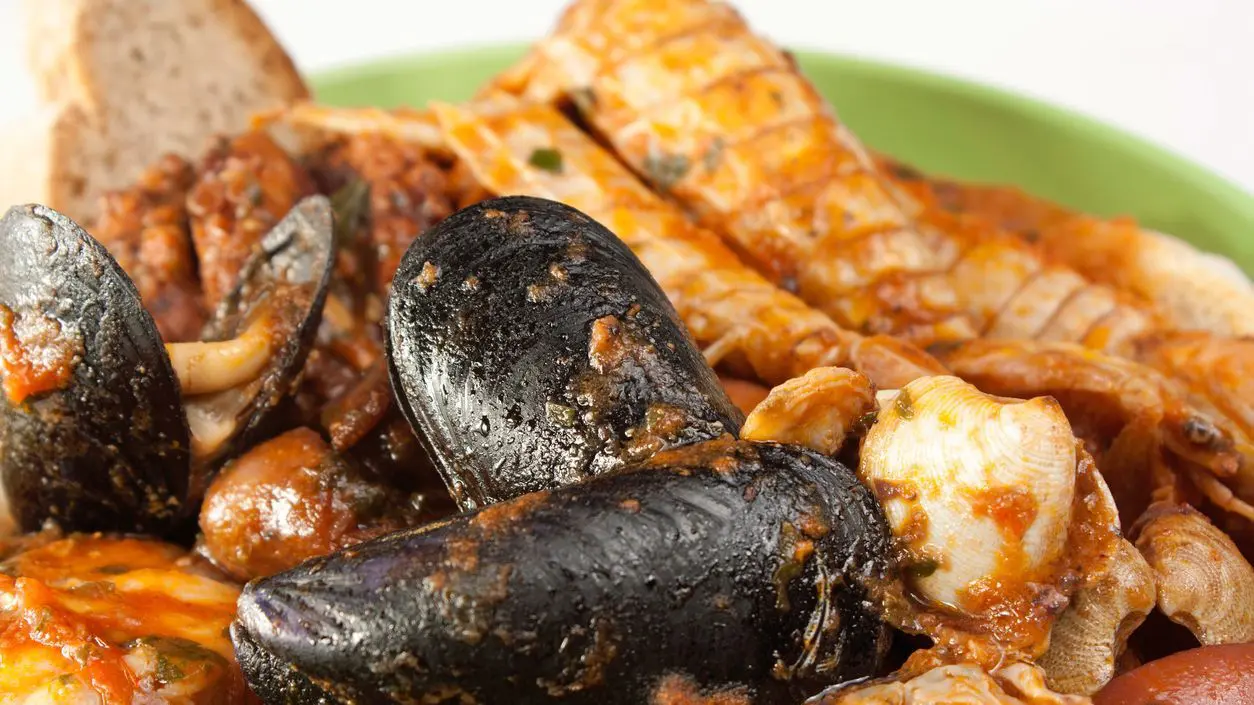
4. Ribollita
In terms of what to eat in Tuscany in winter, Ribollita is a must. This rustic soup has peasant origins – cucina povera – whereby farming families would prepare a large broth, leave it overnight, and then reheat it with the addition of stale bread for its thickening properties. Hence, the name means reboiled.
The original recipe featured cannellini beans, black kale, carrots, celery, and onions. The stale bread would have been stodgy and bland, its role being to bulk out the soup and stretch out the longevity of the pot.
Modern recipes often see the bread infused with a touch of olive oil. Ribollita may be enjoyed all year round in Tuscan destinations. However, the soup comes into its own during the chillier months.
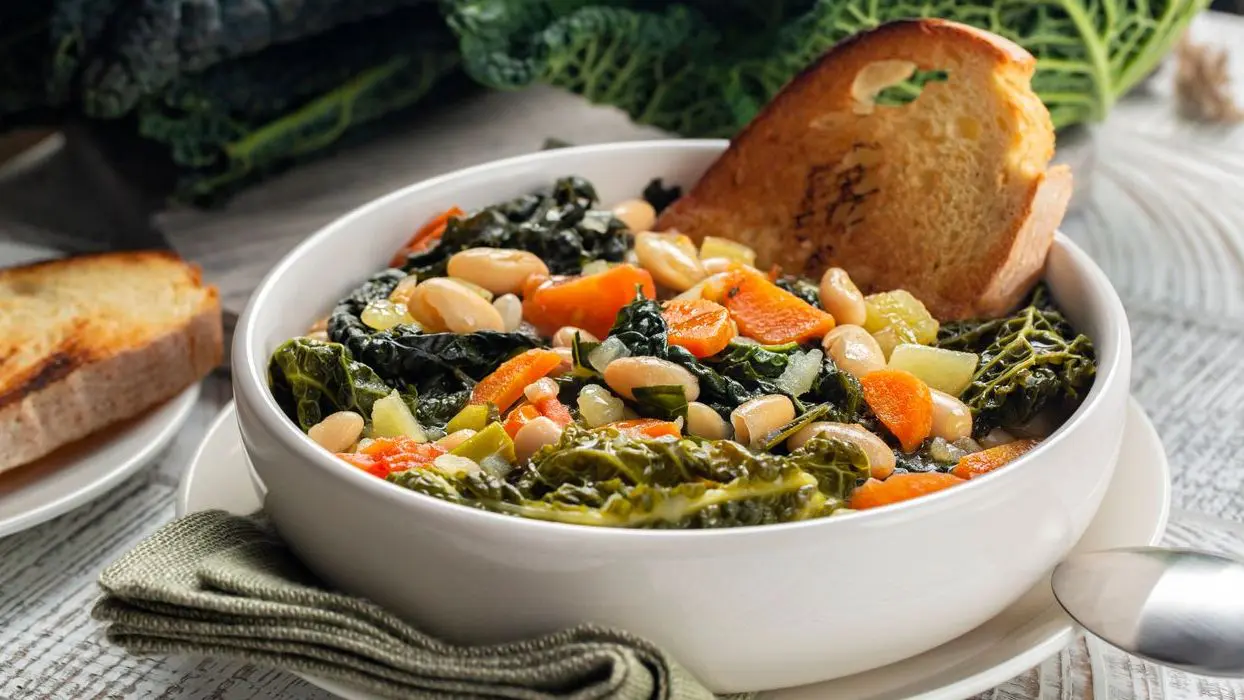
5. Pappa al Pomodoro
Pappa al pomodoro is similar to ribollita. This is another peasant-style vegetable and bread soup, with tomato, garlic, and basil forming the base. The tomatoes should be ripe, contributing a sweetness, which is balanced by the basil.
As with ribollita, stale bread is added to the batch as a thickening agent. However, pappa al pomodoro may be enjoyed fresh on the day it is prepared or spread over several days.
This soup is served hot during winter and at room temperature during the warmer months. It is ordinarily consumed as a primo piatto, but it also suffices as a secondo for lighter appetites.
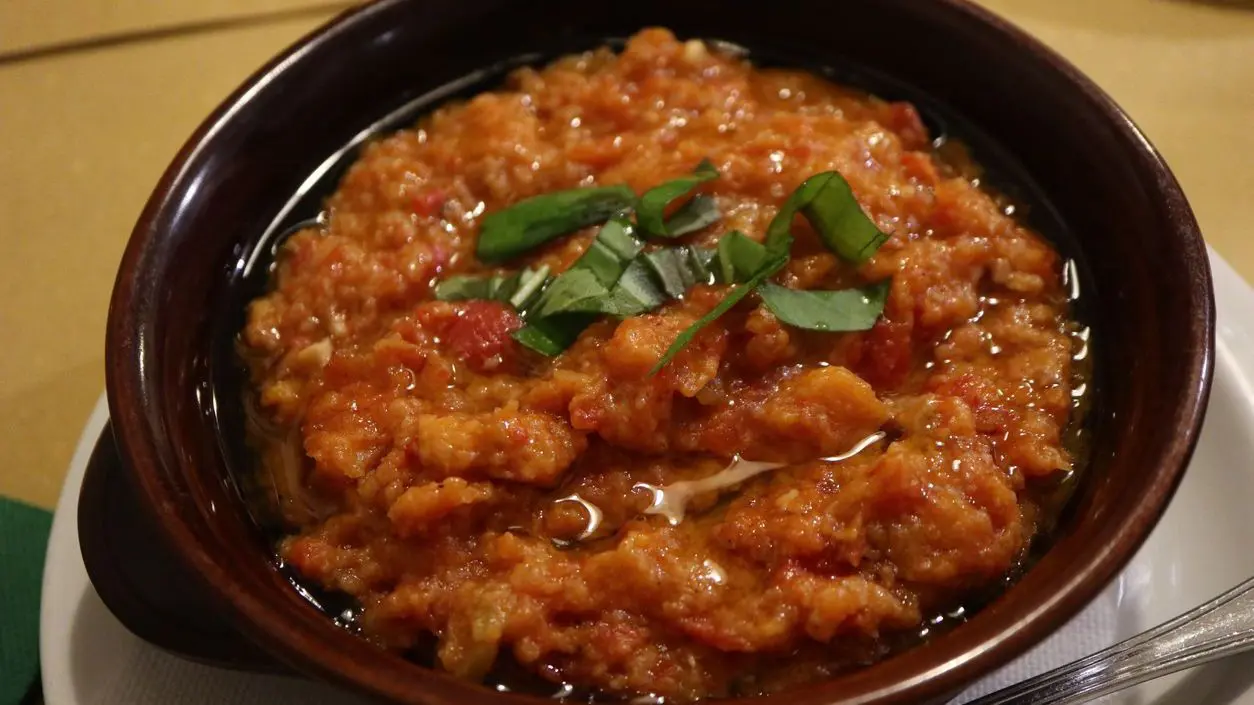
6. Crostini Toscani
Dating back to medieval times, crostini Toscani is a Tuscan antipasto of lightly toasted bread topped with chicken liver paté. This paté is enhanced with onion, capers, and anchovies, or sometimes, garlic and sage. The bread should be unsalted to let the flavors of the paté shine.
Crostini Toscani was invented as a means of using every part of the chicken to avoid unnecessary waste. It remains a beloved staple in Tuscan homes and trattorias, making appearances at standard family dinners as well as special occasions.
A platter of crostini Toscani pairs beautifully with Tuscany’s exquisite red wines and stands as a testament to the power of simple cuisine. They also appear on menus as crostini neri, and are especially prevalent in Florence and Siena.
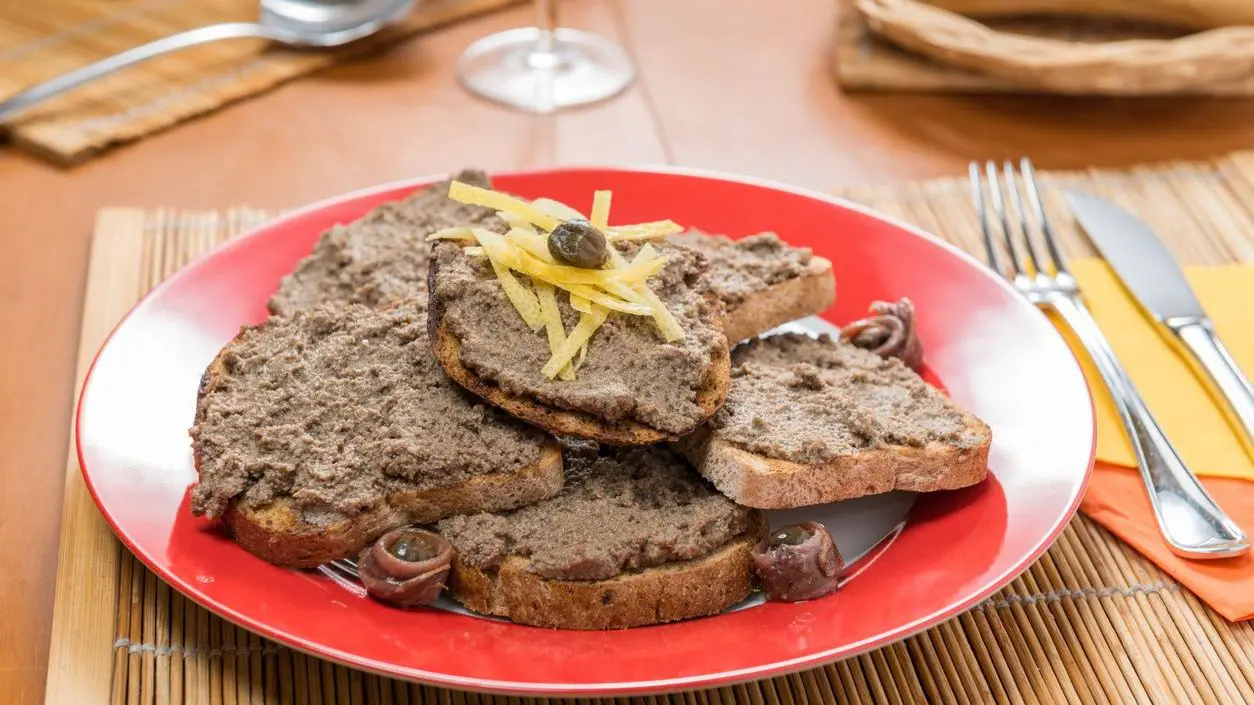
7. Lampredotto
Lampredotto is the classic street food to try in Tuscany. This sandwich comes from Florence and is stuffed with meat extracted from the cow’s fourth stomach, which is slowly simmered with tomatoes, onion, and parsley. Once cooked, the meat is topped with green sauce and served in a bread bun.
Lampredotto sandwiches are a favorite among locals who consider them a symbol of Florence’s working-class traditions. In medieval times, this meat was inexpensive and easy to come by, meaning that laborers from all classes could always find subsistence.
Never mind the restaurants – the best sandwiches are sold by the trippai (tripe vendors) dotted amid the streets of Florence.
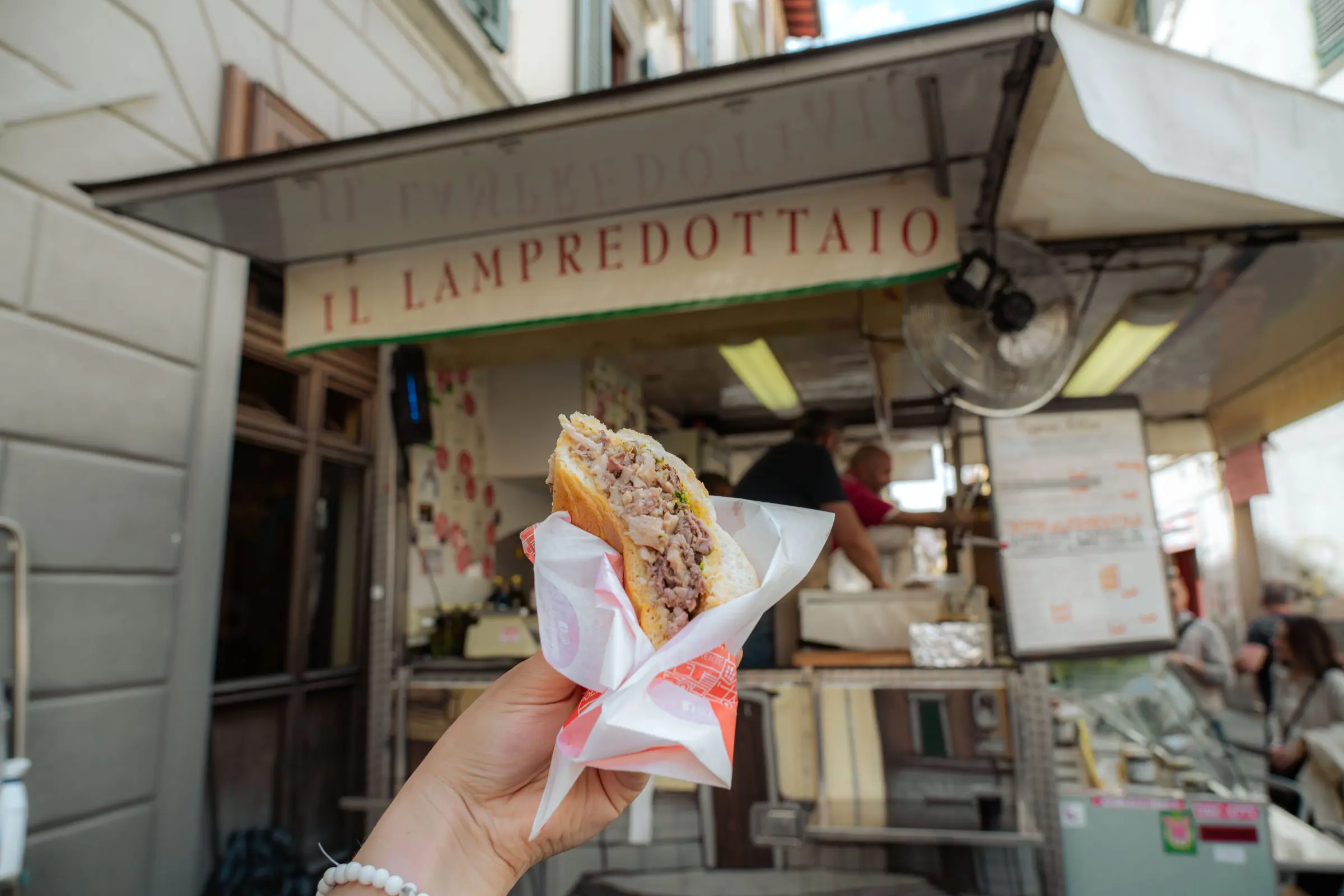
8. Pici all’Aglione
Pici all’aglione is a historic pasta dish to eat in Tuscany starring thick, hand-rolled spaghetti. It has been around since the Etruscan times and is believed to have originated in the Val d’Orcia. In its purest form, pici all’aglione is served with a simple garlic and tomato sauce.
The garlic used is the variety aglione della Valdichiana, from which the dish collects its name – aglione means big garlic in Italian. Even a single bulb can exceed half a kilo in weight, and the flavor is a touch sweeter and delicate than most garlic species.
Aglione della Valdichiana crops are planted in the Chiana Valley and are considered a gourmet jewel in Tuscan cuisine. As aglione della Valdichiana does not bear the usual taste of garlic, it is a popular dish for those on a first date.
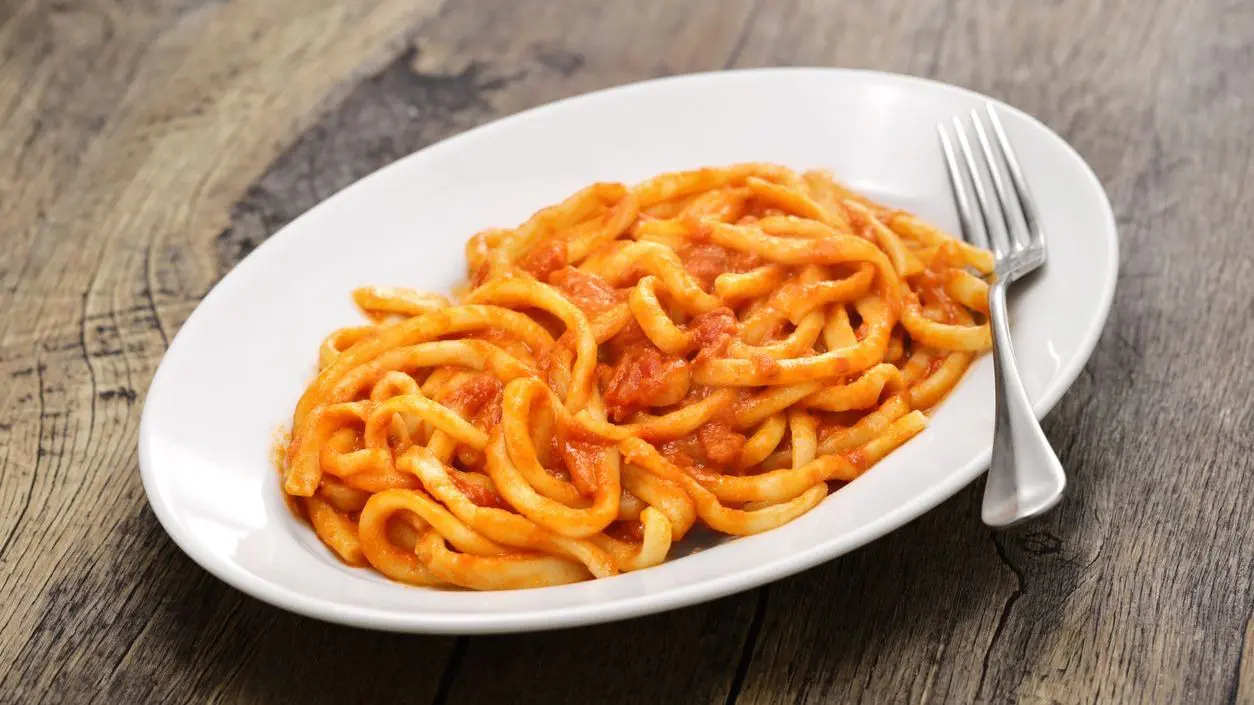
9. Cinghiale in Umido
For those seeking an iconic Tuscan game dish, look out for cinghiale in umido on menus. This wild boar stew is prevalent in Maremma, Chianti, Siena, and Arezzo, where boar hunting has been practised for centuries.
The meat is first marinated in red wine, juniper berries, and bay leaves before being slow-cooked with onions, carrots, celery, tomato, rosemary, and sage.
This lengthy process softens the meat and draws out its earthy tastes. Cinghiale in umido is served with pasta, polenta, or bread and is generally associated with what to eat in Tuscany in autumn.
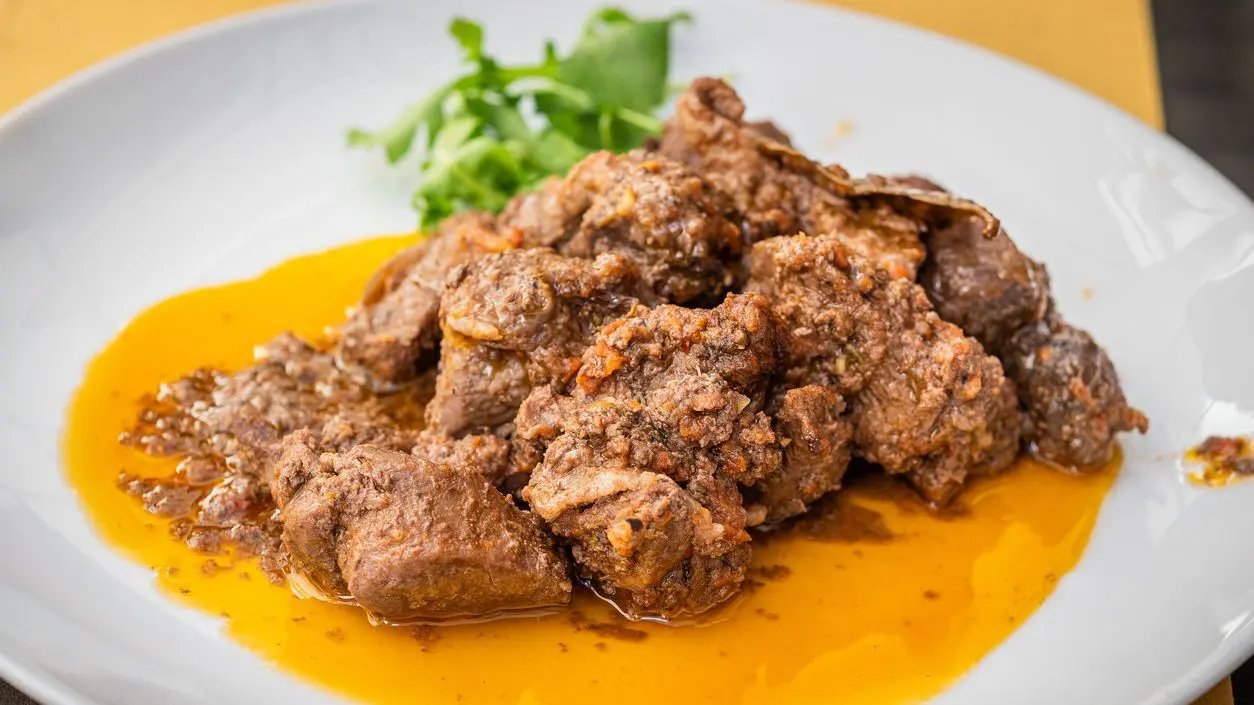
10. Tordelli Lucchesi
As for the contribution of Lucca to this list of the best food in Tuscany, seek no further than tordelli Lucchesi. This is a stuffed pasta, much like ravioli, usually filled with beef and pork, infused with herbs, such as sage.
Each pocket of pasta has a distinctive crescent shape, and the dish is presented with a dusting of Parmesan cheese. The color is also of note, being a vivid shade of yellow.
Considered a comfort food, tordelli Lucchesi makes a regular appearance at Sunday lunches with friends and family, as well as special occasions. Tordelli Lucchesi are widespread throughout Tuscany, with each city putting its own spin on Lucca’s trademark dish.
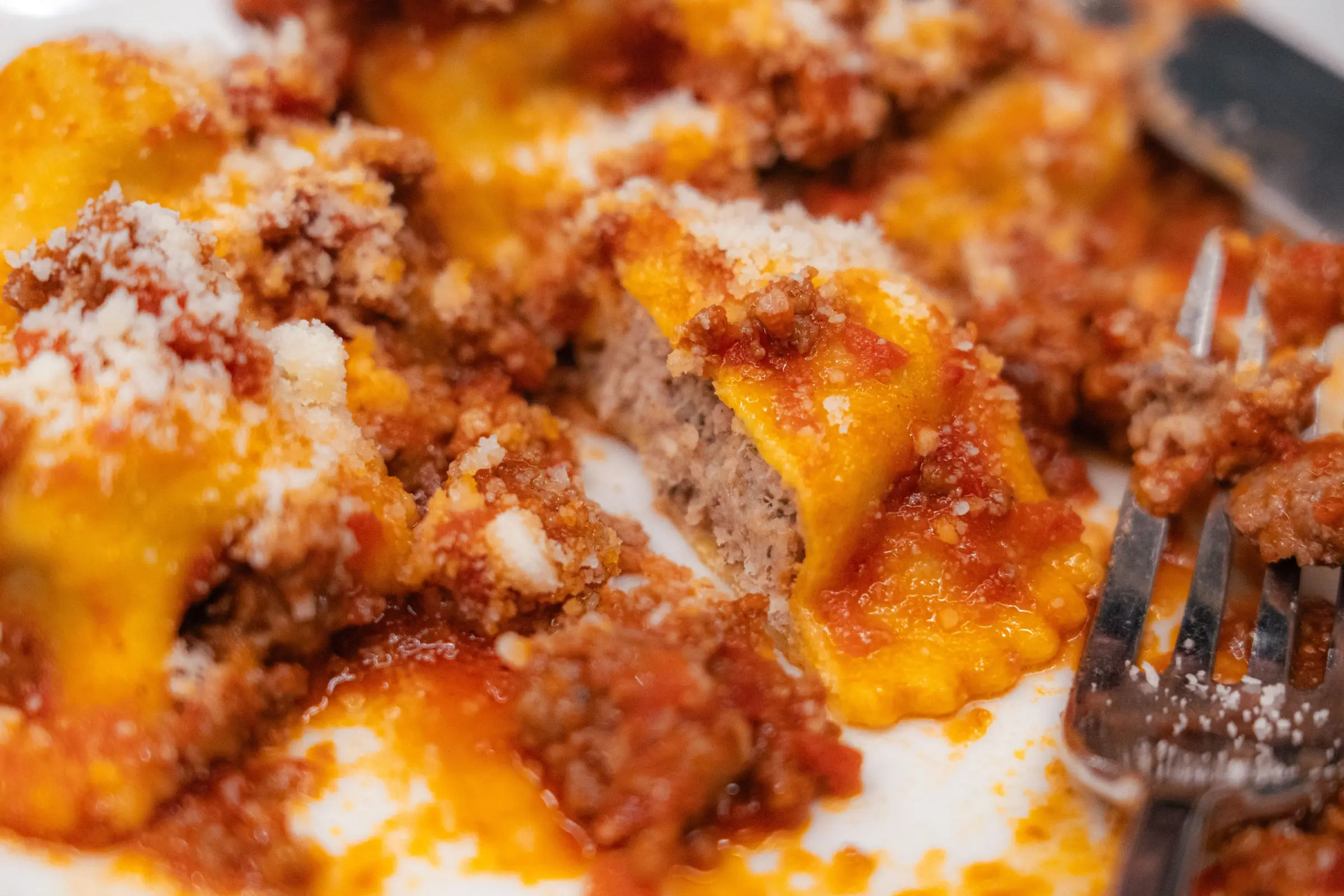
11. Acquacotta
Translating to cooked water, acquacotta is yet another Tuscan peasant soup thickened with stale bread. It comes from the Maremma coastal region to the south, near the border with Lazio.
Besides the hardened bread, the traditional acquacotta recipe would have included a mix of onions, tomatoes, celery, and carrots – subject to what was available – with a topping of a poached egg. Modern recipes frequently add pecorino cheese as a garnish.
Acquacotta was conceived by the poorest workers, such as woodcutters and shepherds. Existing since ancient times, it is now a regional comfort food. Acquacotta con funghi is a deviation from the conventional recipe, using Tuscany’s porcini mushrooms as the main ingredient.
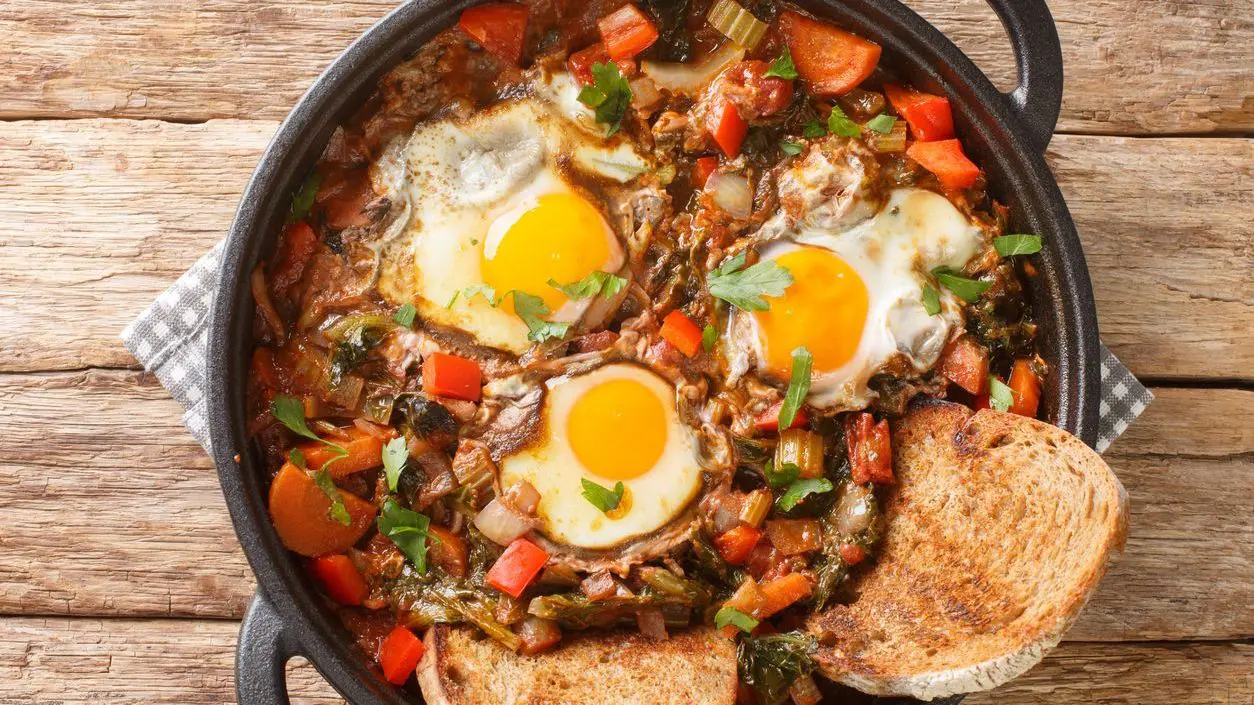
12. Maccheroni all’Ocio
Maccheroni all’ocio is one of the most distinctive Tuscan dishes. As a specialty of Arezzo, a city in eastern Tuscany, it’s quite challenging to find this pasta dish in other towns. The maccheroni refers to a thick pasta, while all’ocio means with goose.
Another example of cucina povera, goose meat was assigned to this dish due to the abundance of geese in the vicinity around Arezzo. At one point, goose was consumed far more than beef, pork, and poultry, and maccheroni all’ocio was traditionally seen as the best way to use up surplus scraps of meat.
The goose meat and pasta are infused with a tomato-based ragu, flavored with garlic, onion, and herbs, such as sage or rosemary. The final result is a hearty, comforting meal which is particularly popular during autumn and the festive period.
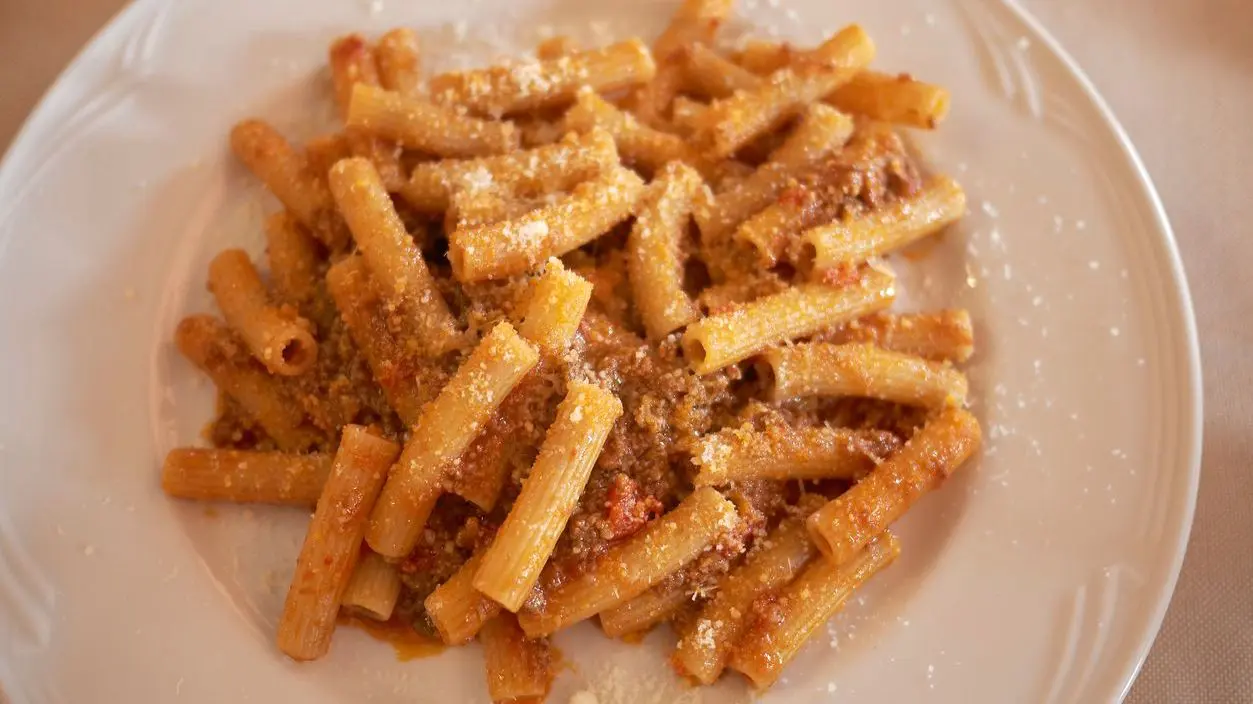
13. Castagnaccio
Castagnaccio is a dense cake made from a dough of chestnut flour, rosemary, pine nuts, and raisins. The addition of olive oil and water adds moisture to the cake, and sugar is not necessary, although orange rind and fennel are sometimes added for a more complex flavor.
Castagnaccio dates back to the Middle Ages, when chestnuts were a staple of rural diets, particularly among poorer echelons of society. This autumnal treat is what to eat in Tuscany in the fall.
Travel to the region during shoulder season and you’ll find this gluten-free cake in bakeries throughout Tuscany, but especially around the Apennines.
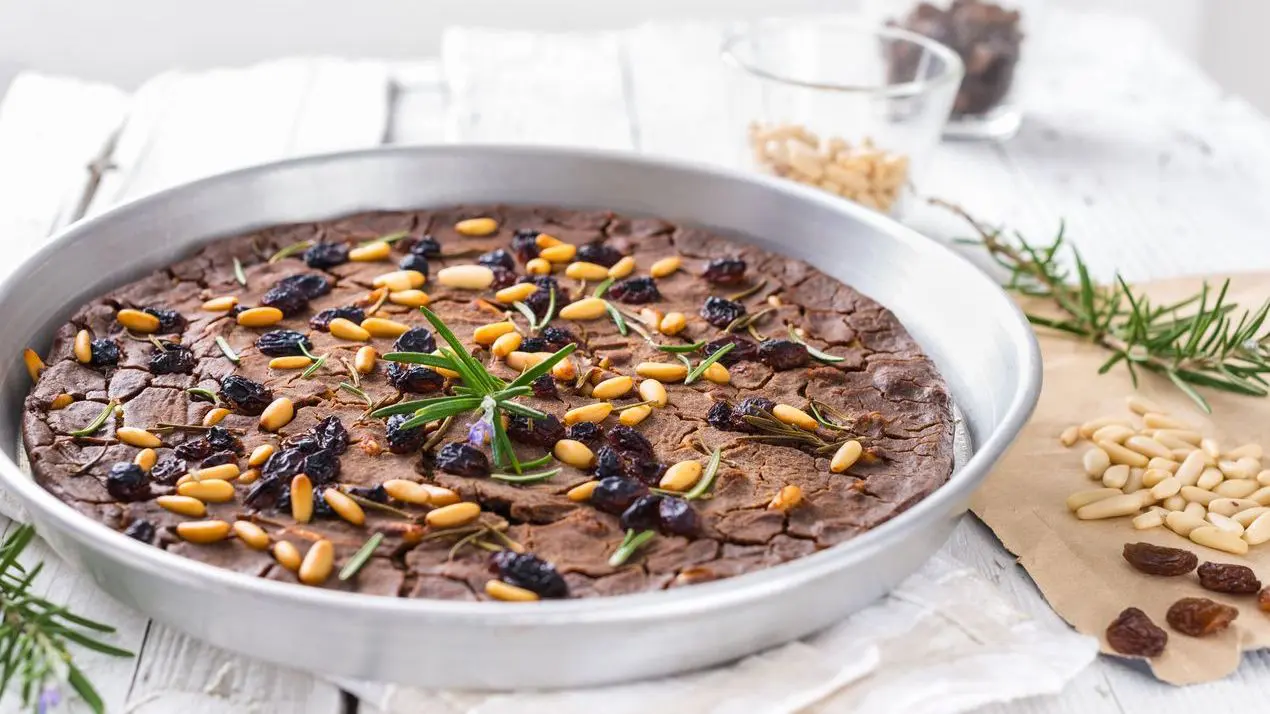
14. Cecina
Also called farinata, cecina is another gluten-free food to try in Tuscany. This is a chickpea flatbread, which is thought to have existed since Roman times.
There is a legend that medieval soldiers created a version of cecina at the battlefield. However, it has traditionally been prepared by baking the dough in wood-fired ovens.
As per the norm in Tuscany’s traditional cuisine, the recipe is a simple affair of chickpea flour, water, extra virgin olive oil, sea salt, and pepper. This produces a thin, crisp flatbread, which allows the nuttiness of the chickpeas (ceci in Italian) to take center stage.
In Tuscany, the best cecina is considered to be found in Pisa and Livorno, known locally as torta di ceci. There are several other variations of cecina beyond Tuscany. Liguria’s take on cecina is faina, while Sardinia’s is fainè. Cecina and its divergences are consumed as a snack or as an accompaniment to stews and soups.
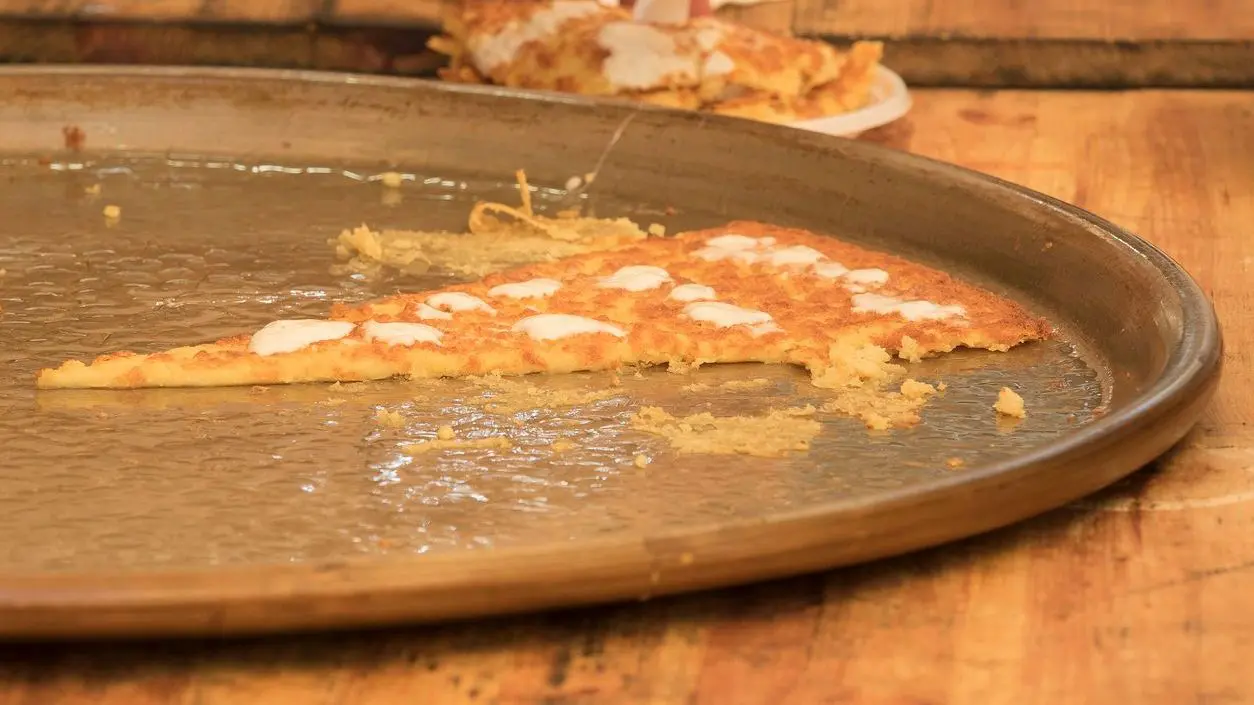
15. Fettunta
Fettunta comes from the Tuscan dialect, from the phrase fetta unta, which means oily slice. Essentially, this is a slab of Tuscan bread, which is toasted before being rubbed with fresh garlic and doused with extra virgin olive oil. Further seasoning may include salt and pepper.
Being as close to garlic bread as you’ll find in Tuscany, fettunta is consumed as a light appetizer either on its own or alongside a spread of cheeses and olives.
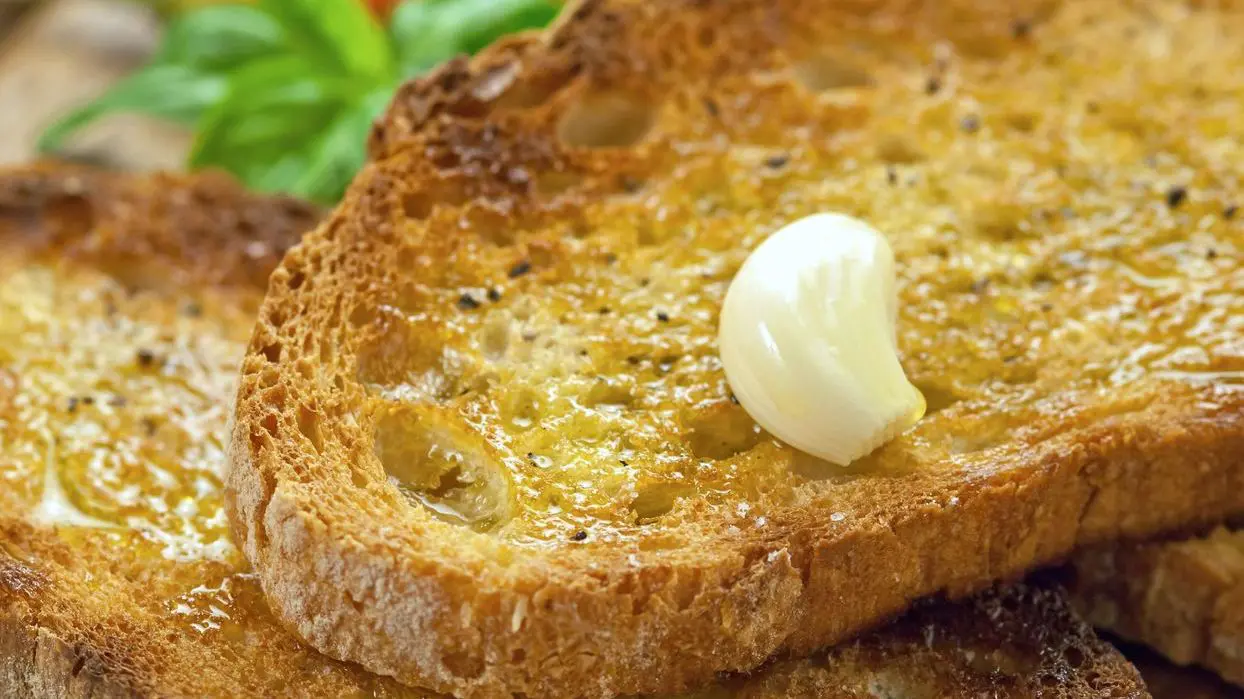
16. Polenta
Polenta is not a strictly Tuscan invention, but it’s popular at the dinner table throughout the region. This dish of boiled cornmeal hails from the cucina povera custom and originally grew from the northern regions of Lombardy, Veneto, and Piedmont.
However, it became widespread across the country and is a popular alternative to bread and potatoes in all regions of Italy.
Traditionally served as a creamy side dish, Tuscan chefs adopted the practice of leaving polenta to cool before grilling, frying, or baking it for an additional burst of flavor.
Typical dishes of Tuscany include polenta e funghi (polenta with Tuscan mushrooms), polenta e cinghiale (served with wild boar stew), and polenta con baccala (served with salted cod).
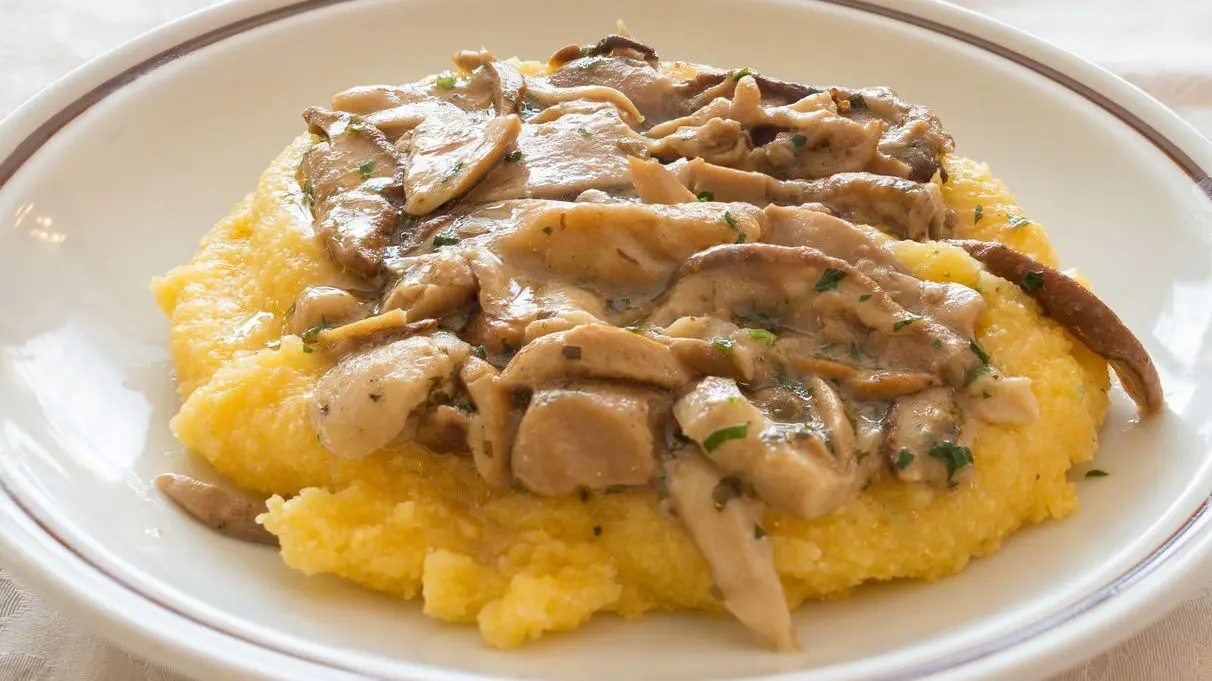
17. Panzanella Toscana
Panzanella Toscana is a traditional Tuscan salad, made primarily with stale bread soaked in olive oil, ripe tomatoes, and basil. Other simple ingredients such as onions, cucumbers, and bell peppers may be added, but anything goes.
This bread salad is yet another example of cucina povera, where the idea is to use whatever is to hand and in season.
Panzanella Toscana is a refreshing summer dish that accentuates the flavors of fresh vegetables. It’s also another great way to ensure that bread doesn’t go to waste, with olive oil adding a pleasing taste.
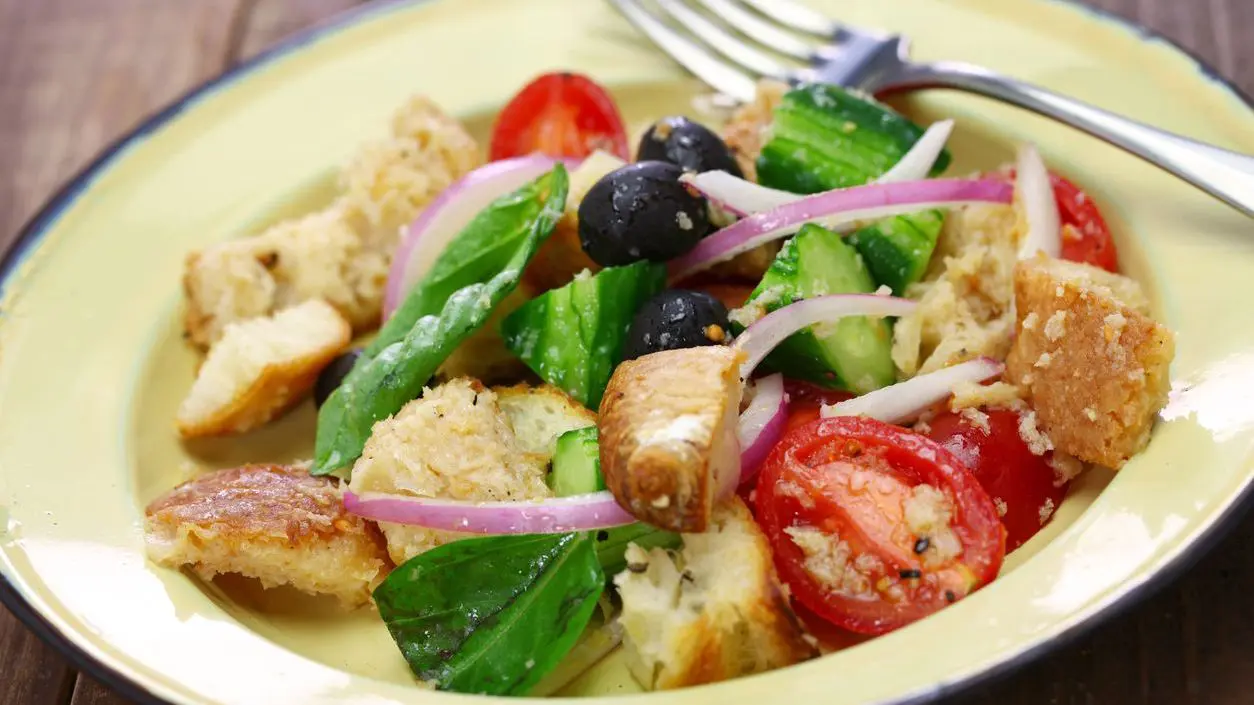
18. Schiacciata all’Uva
Schiacciata all’uva is a Tuscan flatbread traditionally baked in tandem with the fall grape harvest (vendemmia). Wine grapes are the star component, with the Canaiolo variety being the preferred choice.
The focaccia dough is made the standard way, using flour, water, salt, and yeast mingled with rosemary, sugar, and olive oil. When prepared with the grapes, the end result is a pleasing hybrid of sweet and savory.
Translating to crushed in Italian, schiacciata refers to the way the focaccia is flattened during the baking process. Schiacciata all’uva is known colloquially as winemakers’ focaccia and is only available during September and October.
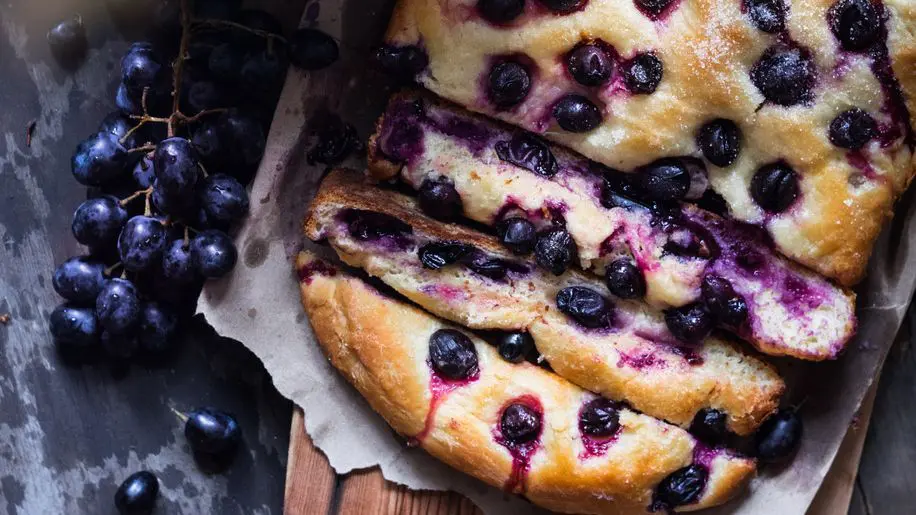
19. Cantucci & Vin Santo
The pairing of cantucci (biscotti) with a glass of Vin Santo (dessert wine) is a cherished tradition in Tuscany’s food culture. In fact, it goes as far back as the Renaissance courts of the Medici family.
As the cookies first appeared in Prato, they’re also widely known as cantucci di Prato. These almond-based biscuits were twice-baked, resulting in a hardened exterior and a long shelf life – another example of historic batch cooking.
Nowadays, the preparation has been tweaked to produce a slightly softer and more palatable texture. Vin Santo translates to holy wine and sports a fetching amber hue. Although present in other regions, it’s made predominantly in Tuscany using Trebbiano and Malvasia grapes.
The wine carries notes of caramel, apricots, and nuts, which explains why it pairs so well with cantucci. Folklore says that Vin Santo served medicinal and miraculous purposes during the 14th-century plague outbreak. These days, many Tuscans round off a meal with a serving of cantucci and Vin Santo.
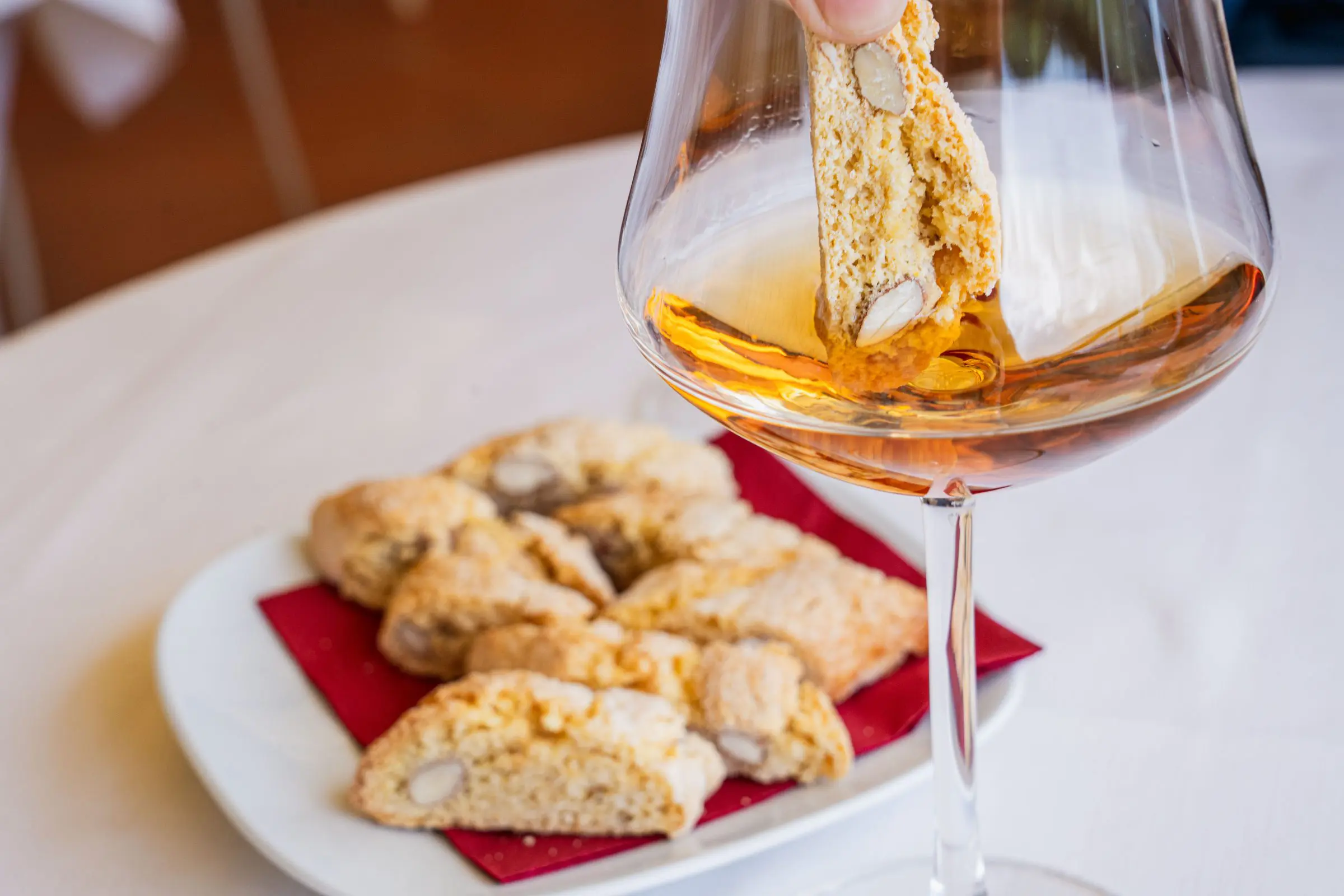
20. Panforte
Translating to strong bread, panforte is a dense cake from the city of Siena. It is made of honey, sugar, nuts (almonds and hazelnuts), dried fruit, and warming spices, such as cinnamon, nutmeg, and cloves.
The texture is chewy, and the flavor is intense, with recipes going heavy on the nut content. As with most Tuscan dishes, the preparation of panforte is simple, but the main ingredients should be high in quality.
Monks are credited with the invention of panforte, preparing it to take on pilgrimages. It held a high status during the Middle Ages when the ingredients carried a high cost, and later became emblematic of the festive season.
These days, panforte is considered the quintessential Christmas cake of Siena, best enjoyed with a glass of Vin Santo.
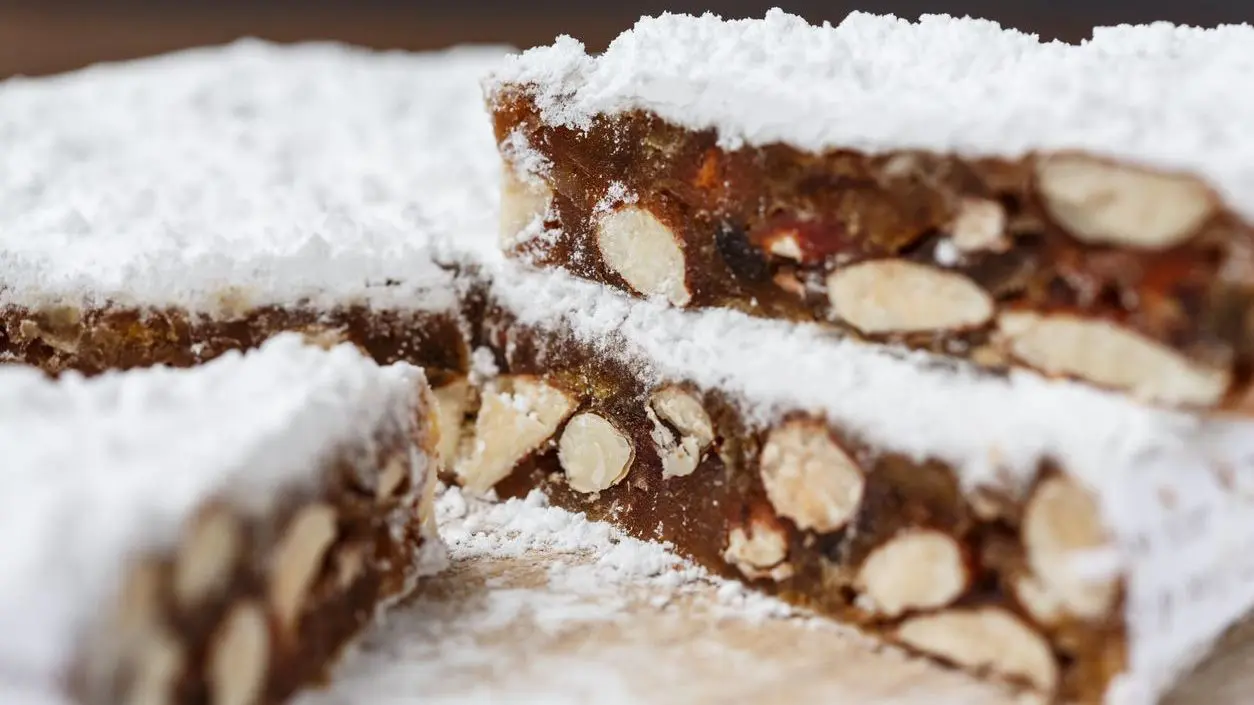
21. Ricciarelli
Another Sienese specialty, ricciarelli are soft almond biscuits, which were inspired by Middle Eastern confections brought to Tuscany during the Crusades.
Made primarily from ground almonds, sugar, and egg whites, the naturally gluten-free dough is enriched with orange zest and vanilla before being set in the oven. Powdered sugar is usually added to the top before baking.
Ricciarelli are customarily molded into distinctive oval or diamond shapes. They should be chewy and soft on the inside but bear a crispy crunch on the outside. As with panforte, they are a festive highlight, but enjoyable all year, especially when paired with a glass of dessert wine or a cup of coffee.
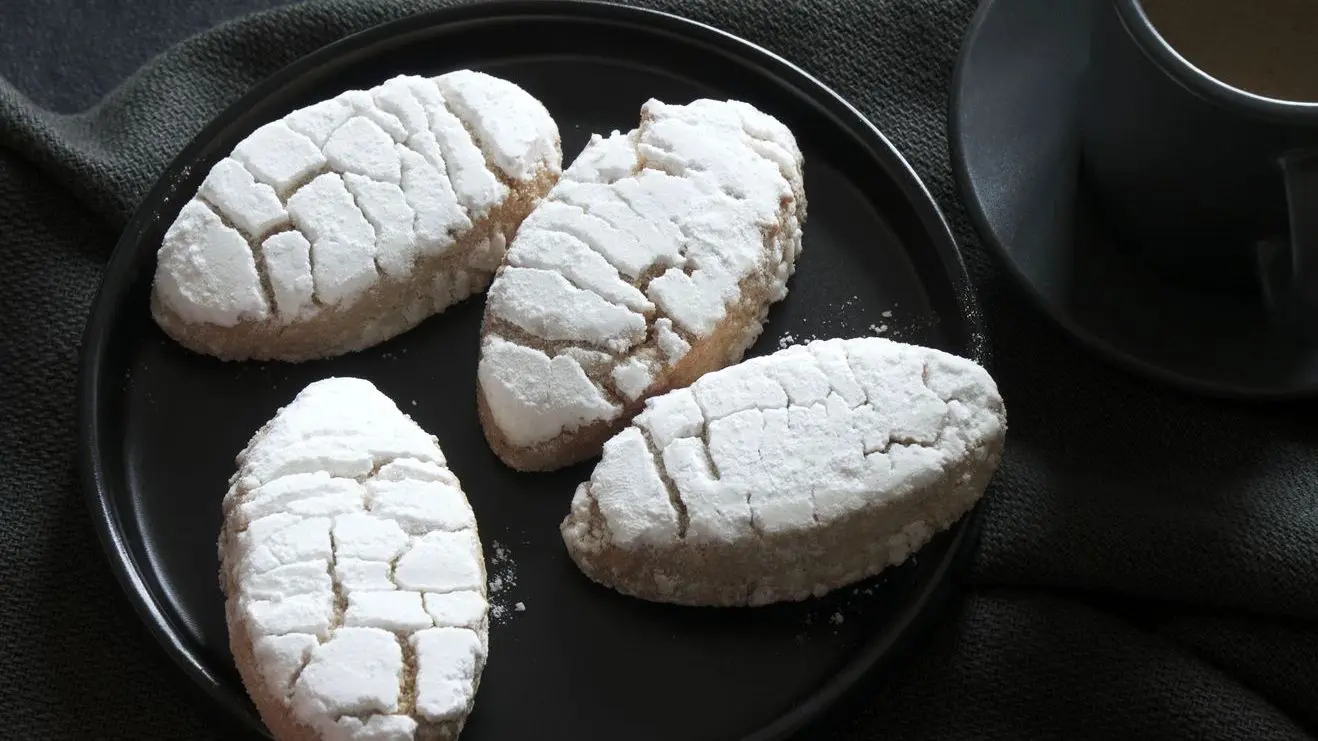
22. Chianti Classico
No guide to the best food in Tuscany is complete without a mention of the regional wines, and Chianti is the most popular type of wine produced in Tuscany. The Chianti wine region stands between Florence and Siena and has been in action since the days of the Medici.
This medium-bodied red wine is typically made from Sangiovese grapes, with Canaiolo and Colorino being called upon for blends. Chianti DOCG is the entry-level table wine, while Chianti Classico DOCG is the most well-known variety.
Chianti Classico Riserva and Gran Selezione are slightly more elevated, noted for their complexity. Chianti wine is available across Tuscany and may be purchased in restaurants and supermarkets.
Wine lovers may also wish to visit the Chianti wine region to tour vineyards, indulge in many a wine tasting, and dine at the wineries, using the quaint town of Castellina in Chianti as their base.
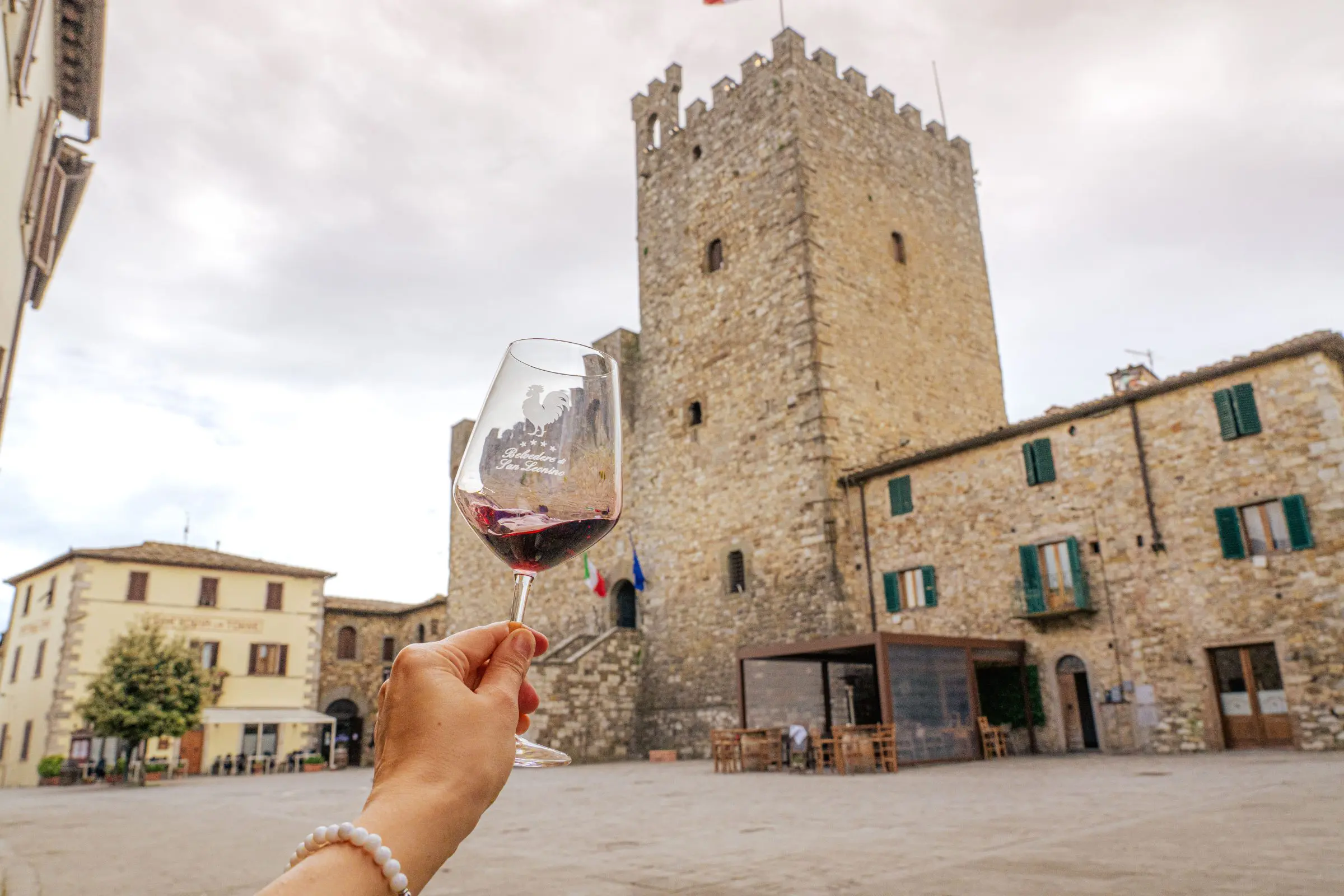
23. Brunello di Montalcino
Another top-notch wine of Tuscany, Brunello di Montalcino was one of the first Italian wines to earn DOCG status. This elegant red wine is produced on the outskirts of Montalcino in southern Tuscany.
It’s made from the Sangiovese Grosso grape (also known as Brunello), which produces a deep structure similar to the prestigious wines of Bordeaux, France.
The Etruscans and Romans initiated wine-making in this area, although Brunello di Montalcino wasn’t officially invented until the mid-19th century under the Biondi-Santi family.
Brunello must be aged for a minimum of five years and spend at least two years in oak and four months in bottle before release. This allows its bold tannins and complex flavors to develop. Brunello di Montalcino is widely available in Tuscany, and the Biondi-Santi estate is a must-see for wine enthusiasts.
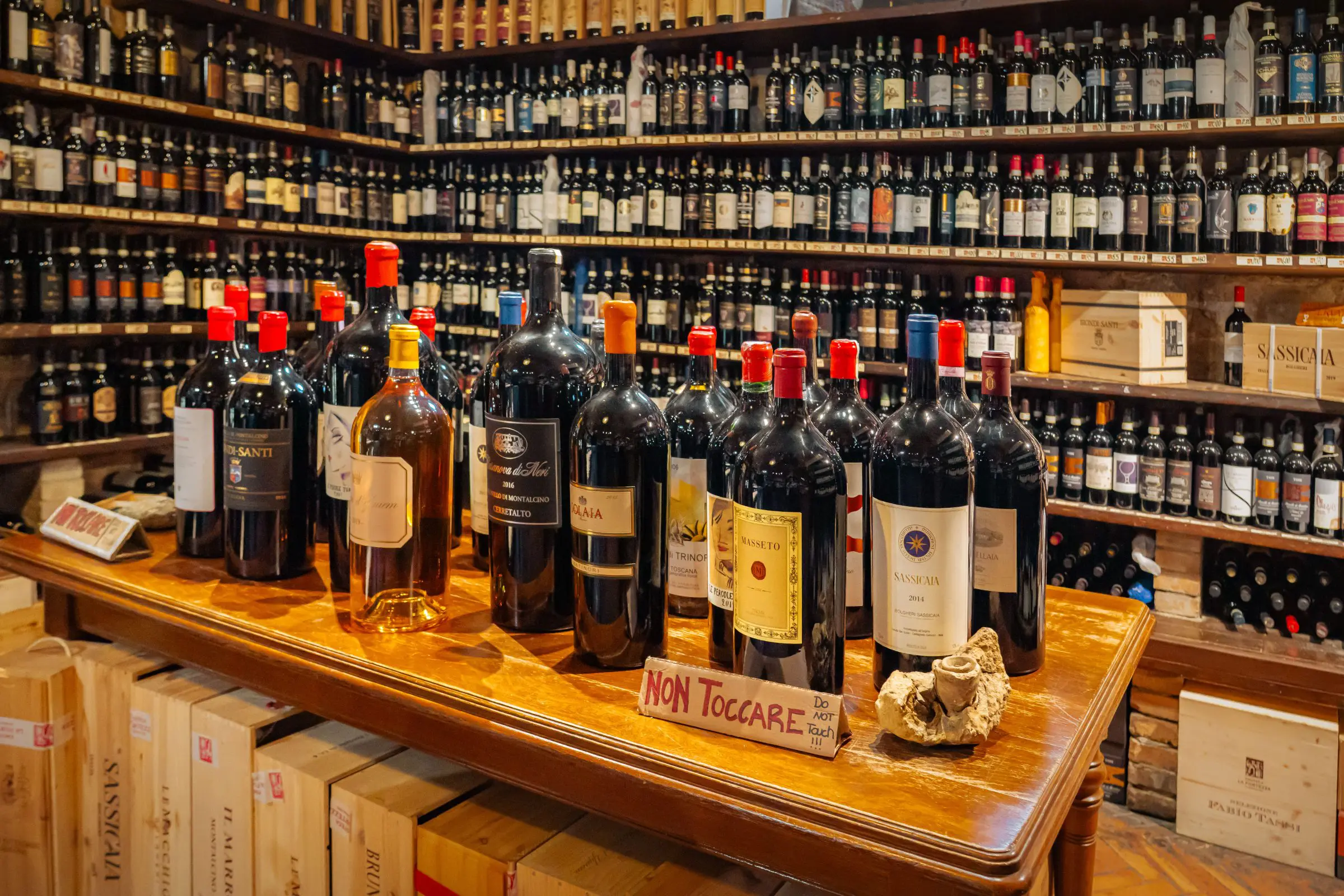
24. Vino Nobile di Montepulciano
Vino Nobile di Montepulciano is one of Italy’s oldest quality wines, with a legacy tracing back to the times of the Etruscans. It gained recognition and went to market in the 16th century, garnering praise from Renaissance poets and aristocrats, hence the name nobile (noble).
Many travelers assume Montepulciano grapes form the base, but this is not the case. Produced around the town of Montepulciano, Vino Nobile is made predominantly with local Sangiovese grapes known as Prugnolo Gentile, as well as a contribution of Canaiolo or Mammolo grapes.
This structured wine, aged for a minimum of two years, expresses notes of cherry, plum, and earthy spices.
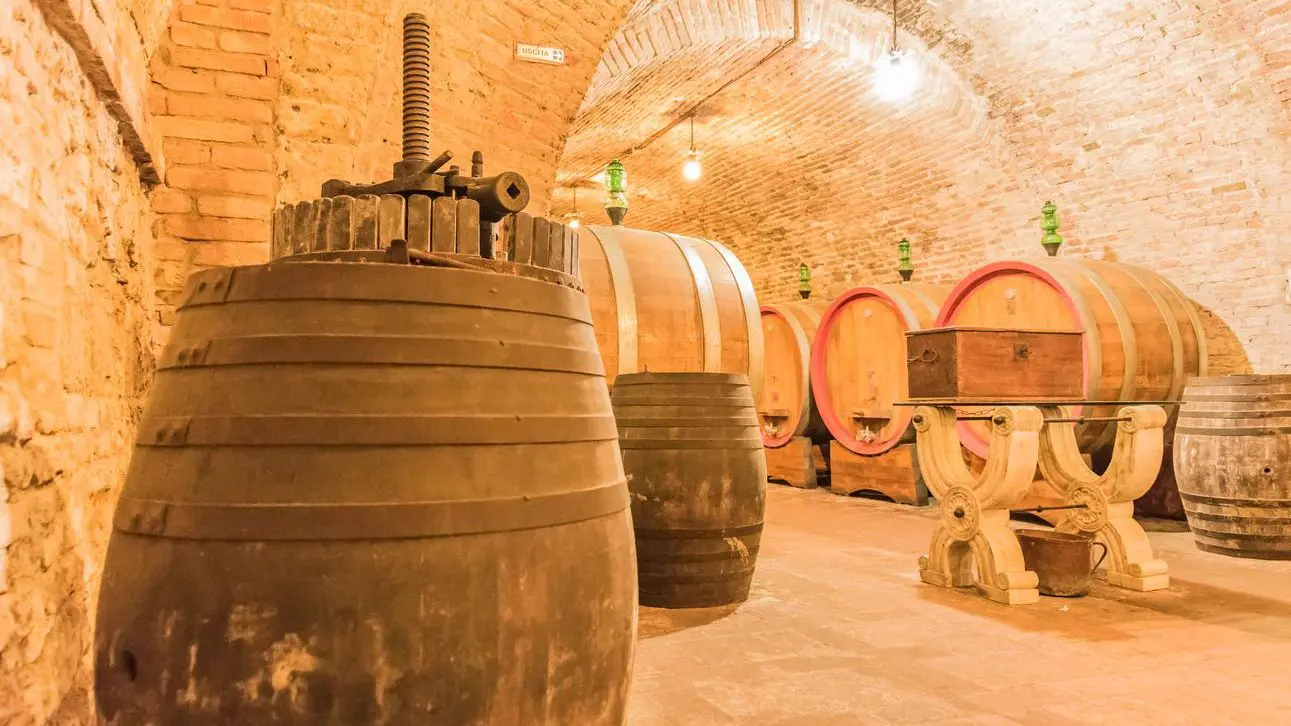
25. Morellino di Scansano
Last but not least, Morellino di Scansano hails from the southern Maremma region of coastal Tuscany. This is a rustic red wine associated with shepherds, respected for its freshness and generosity of fruit notes.
Sangiovese grapes, known locally as Morellino, must make up at least 85% of the blend. Morellino di Scansano is consumed young and pairs well with cheeses, grilled meats, and pasta dishes.
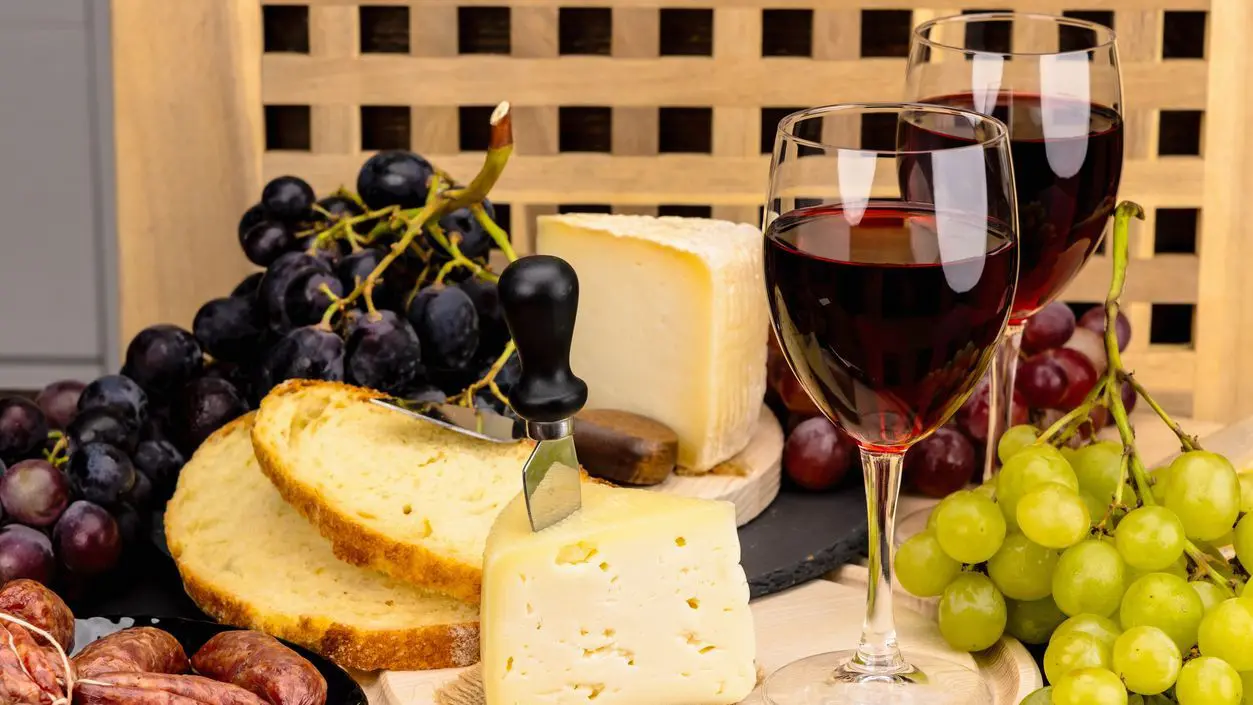
Savor The Best Food in Tuscany With JayWay
If you’d like to explore the Italian food culture, sample the best food in Tuscany, and get to know some of the most beautiful places to visit in Tuscany, our expert trip planners have a deep knowledge of Italy’s regions, and they’re sure to craft a magical Tuscany itinerary, tailored to your travel needs and desires.
The only thing you have to do is get in touch!

Born and raised in Athens, Maria’s passionate about travel and storytelling, a combination that makes her ideal for her role as our content manager.